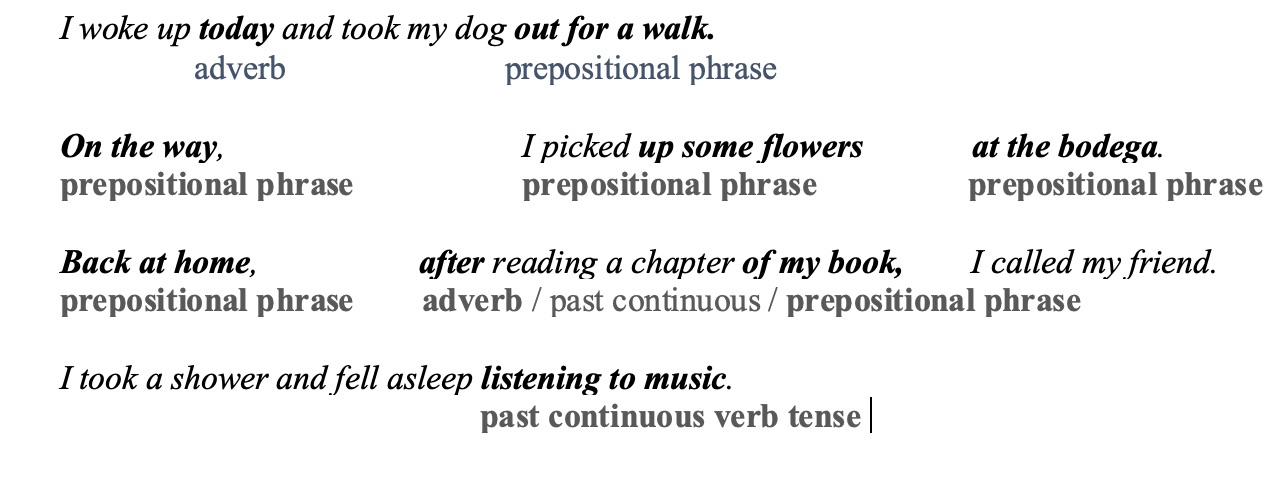 In an age of auto-correct and casual texting, it’s common to think of grammar as a rigid set of rules that is unnecessary to study. Often, students have an intuitive grasp of language and what “sounds right” based on years of reading and writing. Educators face similar questions about studying grammar. In fact, debates over teaching grammar have been raging in the United States for the last fifty years. Those who advocate against teaching grammar argue that students will learn grammar in an organic way, through reading and writing. They state that grammar instruction is often prescriptive and focused on rules, thereby limiting student expression. Certainly, there are dreary and constricting ways of teaching and learning grammar, but can we ever separate our thoughts and ideas from the sentences we are using to express them?
In an age of auto-correct and casual texting, it’s common to think of grammar as a rigid set of rules that is unnecessary to study. Often, students have an intuitive grasp of language and what “sounds right” based on years of reading and writing. Educators face similar questions about studying grammar. In fact, debates over teaching grammar have been raging in the United States for the last fifty years. Those who advocate against teaching grammar argue that students will learn grammar in an organic way, through reading and writing. They state that grammar instruction is often prescriptive and focused on rules, thereby limiting student expression. Certainly, there are dreary and constricting ways of teaching and learning grammar, but can we ever separate our thoughts and ideas from the sentences we are using to express them?
When we understand the relationship between words in a sentence, we gain a clearer sense of what it is that we mean to say. Rather than seeing grammar as a “mechanical” layer of writing, we can use grammar to more fully understand the linguistic choices we’re making and their effect on our readers.
Here we’ll take a look at some of the ways studying grammar can help our writing and language acquisition.
Fluency
When we understand the necessary parts of a sentence, we can feel confident about clarifying convoluted phrasing. Let’s look at an example:
June was at the grocery store when she ran into a girl who used to go to her school named Essie, and she bought three avocados and a seltzer.
This sentence is technically correct but reads quite sloppily. We aren’t sure who bought the avocados and seltzer, June or Essie.
One way to clarify the sentence is using a prepositional phrase to situate us in place, adding an appositive to separate the additional details about Essie, and adding in the adverb “then” to clarify the order of actions.

Syntax
Often, complex syntax can reflect a nuanced and sophisticated way of connecting ideas. By studying grammar, we can start to make our sentences more intricate, and more aligned with our critical thinking.
For example, let’s say we are thinking about the benefits and drawbacks of remote learning.
On a first draft, we might write: Remote learning is beneficial for students who can focus better in their own homes. It is harmful to those who don’t have access to technology or who focus better in a group setting.
Then, we decide that we want to directly show the relationship between the benefits and drawbacks and can use transitional words to combine the sentences.
While remote learning is beneficial for students who can focus better in their own homes, it is harmful for those who don’t have access to technology or who focus better in a group setting.
Remote learning is beneficial for students who can focus better in their own homes; however, it is harmful for those who don’t have access to technology or who focus better in a group setting.
Varying syntax also helps the reader stay engaged with your writing. When our language is monotonous, the reader may have a hard time moving through a piece of writing. Even when reading silently, our “inner ear” enjoys musicality, or at least a change of pace between sentences. Studying grammar can open up more choices for us to create dynamic sentences.
Here is another example:
I walked my dog and I got some flowers. I read a book and I called a friend. I took a shower and listened to music before bed.
All of the sentences above use the simple past verb tense. The syntax does not vary and as a result, the sentences sound more like a list of activities than a narrative.

In the revised sentences, both simple past and past continuous verb tenses are used, which makes the day flow in a livelier manner. By adding in prepositional phrases are added, we are not only mixing up the syntax, but also conveying important details. Adverbs help to locate the activity in time.
Learning another language
Another reason to study English grammar is to improve our ability to learn another language. Students often find that having a familiarity with parts of speech, tenses, and other grammatical components can help them transition into learning other languages. Likewise, students often find that studying another language improves their understanding of English grammar. Even when the grammar structure varies dramatically between two languages, understanding these differences can help students avoid common errors. There are many similarities in grammar structure between English and Mandarin. However, English-speaking students studying Mandarin often face difficulty with adverbs and denoting amount. In order to learn Mandarin grammar, it’s helpful to understand where adverbs are placed in English and how “measure words” are used. Once we start studying grammar across multiple languages, we begin to see how the language choices we make are not arbitrary. Rather, grammar is the architecture of language, setting up the foundations – and possibilities – for how we can express meaning.
Where to Begin
The good news about studying grammar is that we can find it all around us. When reading an interesting article, we can try to identify verb tenses or ways that the syntax is varying. When reading a poem, we can consider the grammatical choices an author made, and how they affect the text. Even when casually texting, we can think about the linguistic choices we are making.
For additional resources, Purdue Owl has excellent online resources on grammar and writing. The classic book Elements of Style by E.B. White and William Strunk, Jr. is a helpful guide to writing clearly and concisely. Additionally, The Blue Book of Grammar and Punctuation by Jane Straus offers clear instruction on grammar and punctuation usage, as well as detailed examples and quizzes.
By Joss Lake, MFA | Private Tutor and Writing Coach

